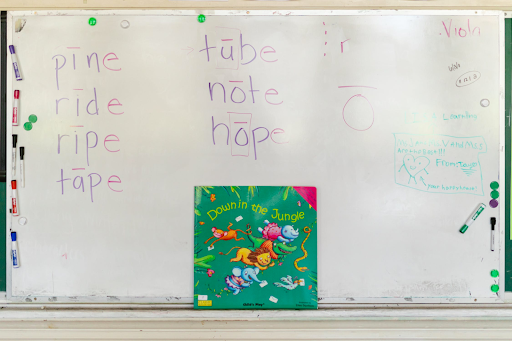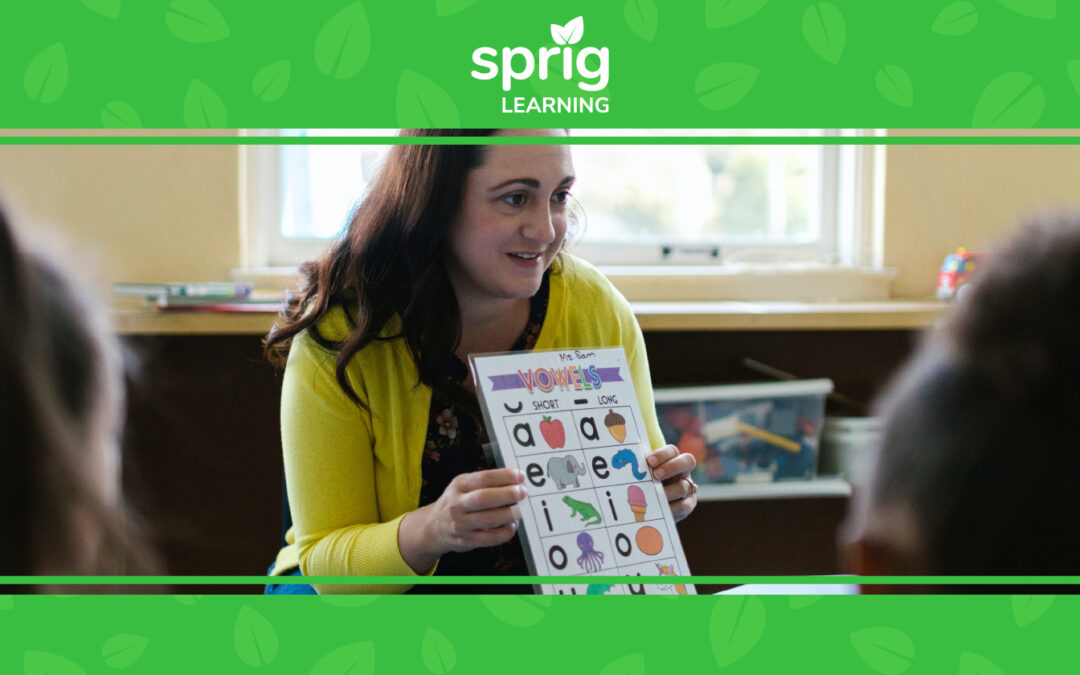Literacy gaps that emerge in the earlier grades tend to widen in the later elementary years. To address educational inequity immediately, it’s necessary to intervene at the right time.
Early literacy interventions provide additional literacy instruction to those K-3 students who require it.
Sprig Learning builds early learning programs that build foundational literacy skills.
It’s better to create an education system that assesses everyone early on for learning strengths and deficits, and provides appropriate instructions.
Such an education culture is inclusive towards all and mitigates the need for interventions.
Often the word “literacy intervention” conjures up thoughts that relate to cost-inefficiencies and doubts over its overall efficiency.
But with hundreds of reading intervention programs being used by thousands of schools, we are past the point of debating the usability of interventions.
Rather, the focus should be on how to best implement literacy interventions in schools.
In this article, Sprig makes a case for early literacy interventions.
How Early Should Interventions Start?

The question of when to introduce intervention implies that supplemental reading instruction should only be an afterthought to initial reading performance.
But it’s known that early learners arrive in kindergarten with a wide range of skill levels in phonological awareness, alphabet recognition, print awareness and other essential literacy skills.
Students at this stage who lag behind often have difficulty catching up with their peers once they begin to receive instruction.
Thus, early literacy intervention should be implemented in accordance with identified skill deficits as soon as possible. This can occur as early as preschool or kindergarten.
Early literacy interventions in kindergarten have produced significant results in multiple language domains for students who are linguistically diverse learners.
Results from multiple studies show that a higher percentage of Grade 1 students tend to reach grade-level proficiency with the help of interventions than Grade 2 students. Thus, intervening at Grade 2 is sometimes too late.
Early literacy intervention should begin as early as possible.
If literacy skills fade-out is a concern, then it must be noted that early literacy intervention participants have consistently shown to read at or above their grade level as far as three years beyond their intervention.
We all know that Grade 3 reading performance is one of the most reliable predictors of lifelong academic and social success.
Thus, we can say that in order for the early learner to sharpen all their reading skills, leading to mastery by Grade 3, they should be properly assessed by kindergarten or Grade 1.
Doing so will not only boost their literacy achievement performance in the short run, but establish a runway for them to become confident readers by Grade 3.
Prevention of Reading Failure

One of the main advocacy points of early literacy intervention is its ability to prevent reading failure.
While it’s important to maximize the learning potential of every child, it’s just as important to help those children who are at risk of falling through the cracks of the current education system.
The National Institute of Child Health & Human Development reports that 74% of children entering Grade 1 at risk for reading failure have reading challenges later as adults. This further corroborates the urgency of early interventions.
Research shows that children who have difficulty acquiring phonemic awareness and phonics skills generally fail to read, or read poorly, and that those poor reading skills are perpetuated without proper interventions.
Thus we see that when it comes to interventions, it’s not just about intervening early, but making sure those interventions are informed by instruction that is backed by the Science of Reading.
Intervening very early on by creating a culture of assessments for all types of learners may help increase the size of the safety net.
But the type of explicit and systematic instruction that goes into addressing some of these skill gaps speaks to the quality of the safety net. Interventions should also be a part of structured literacy.
Lessons from Popular Literacy Intervention Approaches

Literacy interventions are best when they are:
- applied early.
- part of the education system where everybody is assessed for their current skill levels.
- backed by the Science of Reading, or structured literacy.
Now, let’s look at some examples of current literacy interventions. Lessons can be borrowed from them and applied to early literacy interventions.
Structured Literacy Intervention
Structured Literacy Intervention is based on structured literacy instruction, which is a comprehensive and evidence-based system of explicit, systematic and sequential instruction. It provides sample intervention activities.
The term was first popularized by the International Dyslexia Association, but now is widely recognized as the application of the science of reading method. It not only helps those with Dyslexia, but all students in general.
Is it fit for an early literacy intervention?
Absolutely. It supports point #3 above, in that it is based on the science of reading. Dyslexia has been receiving a lot of attention lately, and it explains why certain students are prone to being underachievers in reading.
Short-term interventions
Short-term interventions consist of one-to-one teaching for the lowest performing grade one students. Students receive 30-minute lessons each day for 12 to 20 weeks from a trained literacy specialist.
There is evidence to support that such targeted interventions work to raise the performance levels of the lowest performing Grade 1 students.
Is it fit for an early literacy intervention?
It’s nice that it begins in Grade 1, but it would be even better if it started in kindergarten. Also, it leaves out other students who may or may not have been identified as needing intervention in Grade 1. Furthermore, this approach does not follow through in the later grades to ensure that there is no fade out of skills.
It’s one of the most popular reading intervention approaches used today. It would be further strengthened if it was more inclusive, integrated into daily reading instructional practices and followed up in the later grades.
Intensive Reading
Intensive Reading teaches small groups of students various reading techniques for 40 minutes a day. Parents are also asked to commit to do their own homework, which includes reading to their child every night.
Teachers have also noticed that these students in this approach are more engaged with reading and are excited to participate in the reading lessons. They are benefited from the continuous reading reinforcements that happen both at home and at school.
Is it fit for an early literacy intervention?
It’s a good program with fantastic books, best used in group instruction methodology. It’s a fast-paced system designed to move students along quickly. But in the early years, individualized instruction is just as important, and certain skills may need to be worked over and over until they are perfected.
The Ideal Early Literacy Intervention Program

It’s time to look at new solutions to the old issue of struggling readers. The recent Right to Read report released by the The Ontario Human Rights Commission was an eye-opener for many. What can be done differently?
It’s our hope that this article presents some new ideas to you about how to ensure that more early interventions are inclusive towards all. Current approaches can be improved to ensure that there is sufficient planning and foresight for every young learner.
We have written more on this topic. If you liked reading this piece, you may also want to check out Building Early Literacy Skills in Schools. Thoughtful Considerations.
Interested in an inclusive early intervention framework case study? Let us know.

